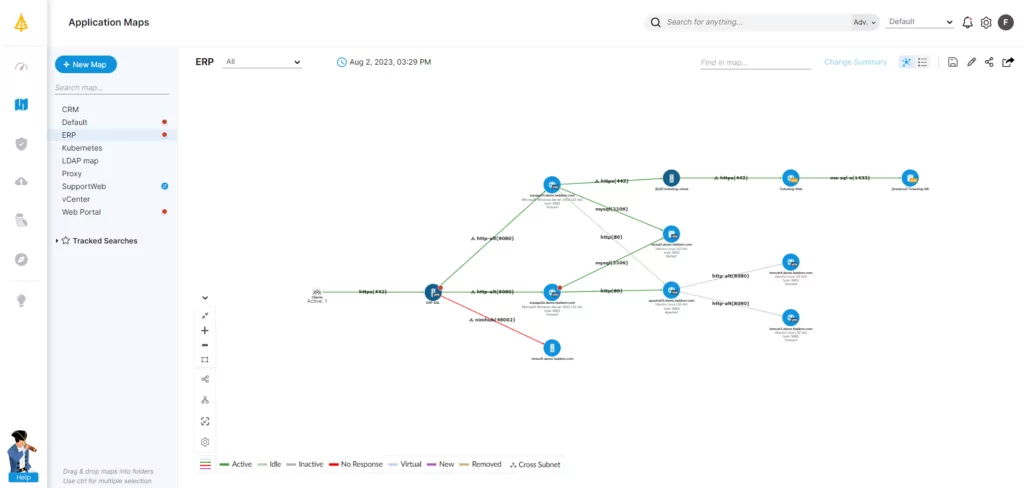Today’s businesses and organizations rely on virtual machines (VMs) and virtualization hypervisors such as VMware and Hyper-V as the basis for their hybrid cloud infrastructure.
VMs are a major part of deploying and testing application workloads, databases, and workspace realization based on an organization’s needs. They also support security, remote work, and operating system flexibility.
Table of Contents
ToggleImproved IT agility and scalability, along with greater cost savings, are just some of the benefits of being able to abstract a virtual layer from hardware and run multiple virtual instances in that space. Statistics show that the combined global virtualization software market will grow from $86 to $136 billion between 2023 and 2028.
VMware vs. Hyper V is a complex choice that depends on many business and IT infrastructure factors. While both offer distinct features and capabilities, every organization must have a clear picture of their business needs along with an understanding of how these two major virtualization hypervisors work.
What Is VMware / VMware vSphere?
VMware server virtualization includes many products in the VMware product suite that expand on VMware vSphere, an all-encompassing server virtualization platform designed for enterprises. At its core is the ESXi hypervisor, a type-1, bare-metal virtualization engine that operates directly on server hardware.
The vSphere ecosystem integrates vCenter Server for centralized management, which allows capabilities like ESXi clustering and vMotion—a feature that enables the live migration of running VMs. The platform also includes a user-friendly, HTML5-based vSphere Client to streamline the monitoring, management, and configuration tasks for IT administrators.
What Is Hyper-V?
IT teams can use the Microsoft Hyper-V hypervisor to create and manage multiple VMs with only a graphical interface or command-line tool. They can also benefit from Active Directory, PowerShell, Remote Desktop, and other Windows features due to its easy integration. Some additional configuration will allow the use of Hyper-V with Linux and other operating systems as well.
This type-1 hypervisor (otherwise known as a native hypervisor or bare-metal hypervisor) has been part of Windows Server starting with Windows Server 2008. It is also found in Windows 8, 8.1, 10, and 11 x64-bit Pro and Enterprise Editions.
Hyper-V runs directly on bare-metal hardware, isolating multiple operating systems from one another and effectively turning a single physical server into multiple VMs. This allows for greater resource utilization and simplifies tasks such as hardware provisioning, application scaling, and disaster recovery.
Businesses often leverage Hyper-V to consolidate their servers, manage workloads more efficiently, or create dev-test environments. Although VMware vSphere ESXi and Microsoft Hyper-V hypervisors perform similar functions, there are many differences in how they operate and accomplish their tasks.
VMware vs. Hyper-V: Key Differences
Many moving parts in both VMware vSphere and Microsoft Hyper-V enable organizations to accomplish a vast array of things with virtualization and VMs. This section discusses some of the primary differences and how they affect the decisions that businesses will make based on their current and future needs.
VMware vSphere Architecture
VMware is a very comprehensive and scalable virtualization platform for diverse enterprise needs. This larger product integration makes vSphere much more than just ESXi and vCenter with vSAN for software-defined storage and NSX for network virtualization and security. Other tools such as Aria Operations offer insights and analytics for optimal resource management.
The platform is also extensible through APIs provided by the vSphere SDK (Software Development Kit). Advanced functionalities such as vSphere HA (High Availability) and FT (Fault Tolerance) further elevate its capabilities, allowing for automatic restart of failed VMs on available servers and ensuring zero downtime by duplicating workloads across servers, respectively.
In its latest version, vSphere 7.0, the platform has integrated support for Kubernetes workloads, making it even more compelling for development and operational environments that are embracing containerization. While vSphere focuses on enterprise-level, bare-metal virtualization, VMware also offers type-2 hypervisors such as Workstation Pro, WorkstationPlayer, and Fusion for lightweight, user-level virtualization needs.
Hyper-V Architecture
Hyper-V leverages a nimble, micro-kernel-based hypervisor architecture that segregates services and device drivers from the underlying hardware. The design not only minimizes system overhead but also speeds up the initialization process. This gives Hyper-V speed and scalability through direct hardware component communication to bypass the need for unnecessary drivers and services.
In a standard Hyper-V environment, the primary operating system on which Hyper-V lives acts as a “parent” VM overseeing resource distribution for “child” VMs running diverse operating systems. This hierarchical arrangement is streamlined by a VMBus, a high-speed data conduit between the parent and child VMs that operates autonomously, with no manual adjustments.
Virtual hard disk files serve as the storage medium for guest VMs in Hyper-V. For optimal hardware resource utilization, including for CPU, storage, and networking, Hyper-V uses a specialized communication framework known as Enlightened I/O. This protocol is compatible with Linux kernels version 3.4 and above, as well as FreeBSD, enhancing their performance on Hyper-V. If an OS does not support Enlightened I/O, it will need to implement an emulation layer, which is less efficient.
The list of differences in architecture and use of these two virtualization platforms goes beyond the scope of this post. The most important thing is for organizations and their IT teams to understand the pros and cons of each hypervisor to make a more informed decision.
Pros and Cons of VMware vs. Hyper-V
Every organization must look at countless factors when deciding between VMware’s vSphere and Microsoft’s Hyper-V. While vSphere has long been a market leader known for its robust performance and extensive feature set, Hyper-V has gained significant ground, especially among businesses already integrated into the Microsoft ecosystem.
Closer inspection based on a wide variety of individual business and IT ecosystem factors shows that each platform comes with its own set of limitations and challenges, such as cost, complexity, and compatibility issues.
This section aims to provide an in-depth analysis of the pros and cons of both VMware vSphere and Microsoft Hyper-V for organizations to make an informed decision tailored to their individual needs.
Advantages of VMware
VMware excels in OS support, including for Windows, Linux, and macOS, among others. It has a vibrant user community and extensive documentation, which aids in troubleshooting and best practices. Teams can leverage snapshots, cloning, live migration, HA, and other advanced features as well.
Many organizations also consider VMware more stable due to it having fewer bugs and vulnerabilities.
Drawbacks of VMware
The primary downside to VMware is its cost, as it requires licenses, subscriptions, and support plans. It also demands more system resources since it runs on top of an existing OS rather than integrating into it.
Some users may also experience hardware and driver compatibility issues that could affect performance.
Advantages of Hyper-V
Hyper-V stands out for its cost-effectiveness, being free for Windows Server and Windows 10 Pro and Enterprise users. It also has lower system overhead compared to VMware since it operates as an integrated part of the Windows kernel.
Hyper-V additionally benefits from seamless integration with Windows features, including security and networking, and offers straightforward VM network bridging.
Drawbacks of Hyper-V
Hyper-V’s limitations mainly revolve around its restricted support for non-Windows OSs, requiring extra configurations for optimal Linux performance. It also comes with fewer resources and a smaller community than VMware. While it integrates well with Windows features, it lacks some of VMware’s advanced capabilities, including snapshots and live migration.
Hyper-V is also more server-focused, making it less suitable for desktop virtualization where visual responsiveness is crucial.
Making the Choice: VMware or Hyper-V?
Each organization will need to decide between VMware vSphere and Hyper-V based on their unique requirements. Both have their own potential for risk and deployment issues because they use resources differently than physical hardware. The many moving parts require management of everything from CPUs and memory to storage and network interfaces.
This has, however, not changed their growth trajectory, as SMBs to enterprises are continuously expanding their use of virtualization. The most recent statistics show that VMware vSphere holds just over 12% percent of the global virtualization market, while Microsoft Hyper-V holds close to 10%. However, choosing between the two depends on a slew of individual factors that are inherent to each business.
Existing Infrastructure
SMBs often use Microsoft technologies and Windows Server, which makes Hyper-V a potentially better fit because of its integration with Microsoft’s other products and technologies. Larger enterprises often have different operating systems and VMs, which might make VMware more effective.
Licensing Costs
Since the Windows Server operating system includes Hyper-V, there are no additional hypervisor licensing costs. VMware vSphere requires separate licensing and significant expenditure for larger environments, which is the tradeoff for its extensive features, functionality, scalability, and broad compatibility.
Management and Automation
How management and automation tools align with an organization is a major consideration for every business. While these solutions for VMware vSphere include vCenter Server and vRealize Suite, Hyper-V’s simpler management console is built into Windows Server.
Depending on the organization’s size, complexity, and IT team skills, the automation of vSphere could be easier for some, while a Microsoft-based organization might find Hyper-V a more streamlined integration. An important factor is that Hyper-V Integration Services and VMware Tools can only be used in their own virtual environment. Although both vendors support raw disk device pass-through, each has different virtual disk file formats.
Availability and Disaster Recovery (DR)
Availability and DR are critical considerations for every business. Both platforms offer similar features, but many organizations prefer vSphere due to its advanced features, including Distributed Resource Scheduler (DRS), a load balancing solution, and vMotion, a workload mobility solution.
VMware vSphere is also among the top DR software tools for cloud backup of virtual servers, while both platforms have snapshot technology for VM and data replication on demand for data loss prevention.
Ecosystem, Tools, and Plugins
These are important factors for every business when it comes to a virtualized environment. VMware has a larger ecosystem of third-party tools and plugins compared to Hyper-V, which enables increased scalability, performance, and options for mission-critical applications. This can be very important for complex software-defined network environments that need a large number of VMs.
Live Migration, App/IT Infrastructure Discovery
Hyper-V and VMware vSphere both support VM live migration features for CPU and memory workloads along with VM files. VMware is often seen as more seamless, with no downtime; however, Hyper-V wins out with an allowable 64 snapshots per VM to VMware’s 32.
Introducing Faddom

The choice between Hyper-V and vSphere has far-reaching implications for application and IT infrastructure discovery in both SMBs and large enterprises. Each platform offers a variety of discovery and mapping tools, but they have limitations when mapping the broader IT infrastructure and network.
Faddom can support discovery and mapping for many VM environments. See all of your servers and applications and how they connect to each other. Start a free trial today!









